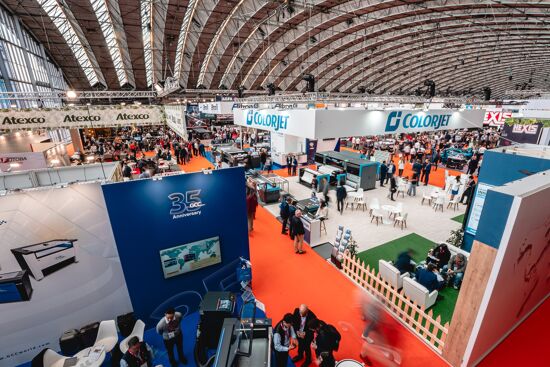Vote now for the FESPA Awards’ People’s Choice Award!

The voting for the prestigious People's Choice FESPA Award is now open until 7th February where those in the industry have the opportunity to vote for their favourite entries, celebrating the exceptional talent in the industry.
FESPA Awards pays tribute to the exceptional achievements of printers and sign makers around the world whilst celebrating their expertise, creativity and innovation. Taking place every 2 years, this year’s edition has received over 180 entries. The announcement of the winners and awards ceremony will take place at FESPA Global Print Expo in Berlin, Germany on 7th May 2025.
The public voting for the prestigious People’s Choice Award is now open until 7th February, industry members have the opportunity to cast up to 5 votes for their favourite awards entries that they believe are the most deserving. This award allows industry members to make their voices heard and celebrates outstanding creativity and production in both print and signage. This award is crucial as the winner will be recognised by the industry who value their contribution, not just by a panel of expert judges.
There are a total of 19 different categories of Awards which include the following:
- Display and POP on paper & board
- Packaging on paper and board
- Display and POP on plastic
- Packaging on plastics
- Posters
- Serigraphy’s and Fine Art
- Decals and Printed labels
- Wrapping
- Creative special effect – paper, board and plastics
- Special effects on t-shirts, garments and other textiles
- Printed garments
- Roll-to-roll printed textiles
- Glass, ceramic, metal and wood products
- Direct printing on 3D products
- Non-printed signage
- Functional printing
- Printeriors
- Young star
- Student
The winner of the People’s Choice Award, along with the winners in all the other FESPA Awards categories will be announced during an exclusive awards ceremony at FESPA Global Print Expo. The entry of the winner of this prominent award will be on display in front of 17,000 visitors. Vote for your favourite entries now! Register your interest to visit here.
Interested in joining our community?
Enquire today about joining your local FESPA Association or FESPA Direct
Recent news
.png?width=550)
What qualities should visionaries in print have? With Folker Stachetzki from Brother
We speak to Folker Stachetzki, Head of Marketing at Brother about visionaries in print.

Bolstering personalisation by combining print and digital technology
Using printed material in combination with digital technologies offers more opportunities to those offering personalisation to customers. Rob Fletcher shares some recent examples of the print and digital working together to enhance the impact of personalised pieces.

European Sign Expo to highlight developments shaping the future of signage and visual communications
European Sign Expo 2025 (6 – 9 May, Messe Berlin, Germany) is weeks away and a host of leading exhibitors are all set to welcome Visionaries from across the signage and visual communications industries to their stands.
